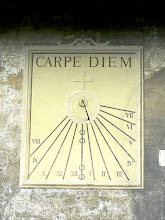ROBBING PLUTO OF ITS PLANETHOOD


ROBBING PLUTO OF ITS PLANETHOOD:
________________________________
Leave It The Way The Sumerians Had It
Says Author Zecharia Sitchin
Our solar system has only eight “classical” planets - so has decided the astronomer’s union, meeting in Prague. Pluto - still out there - must be laughing.
It is ironic - or, perhaps, symbolic - that the decision to deprive Pluto of its status as our sun’s ninth planet coincides with the 30th anniversary of the publication of my seminal work The Twelfth Planet in Autumn l976. In it I suggested that the Sumerian Epic of Creation is not an allegorical myth but a sophisticated cosmogony scientifically describing how our solar system came to be; and it most definitely included Pluto.
Inscribed on seven clay tablets, the text described how the inner and outer planets appeared; how an invading celestial body (“Nibiru”) collided with and broke up the planet ‘Tiamat’, creating “a new heaven;” and how Nibiru, captured in a great elliptical orbit, became the twelfth member of the Sun’s Family - Sun, Moon, and ten planets including Earth, Nibiru and Pluto. These ‘celestial gods’ were matched by a pantheon of twelve deities on Earth.
The reports from Prague at first suggested that astronomers were bothered by Pluto’s small size, now that a large icy body has been found farther out. But the final vote focused on what has troubled astronomers almost from Pluto’s discovery in 1930. Its unusual inclined orbit that weaves in and out of Neptune’s path.
This odd orbit has led some astronomers to speculate that Pluto began its life as a satellite, perhaps of Neptune. But what forceful event could have caused it to shift position and adopt a strange orbit? No one knew. But in The 12th Planet I wrote that the Sumerians of ancient Mesopotamia knew: Pluto (“GAGA” in the Epic of Creation) was indeed a moon of Saturn, pried off and sent into independent orbit by the invading Nibiru to play an important role in those celestial encounters.
In fact, the Sumerians were also aware that Gaga/Pluto ended up in the odd orbit next to Neptune. In the Sumerian pantheon, the planet we call Neptune was the celestial counterpart of the Aquarius god Enki. His ‘chancellor’ or ‘visier’ was nicknamed Ushmu, meaning “He ‘of two faces” - and so was he depicted, with one face looking at Enki and a second face looking away from him (Fig. 1) - exactly the way Pluto looks at Neptune.
The Epic of Creation and other relevant Sumerian texts are supported by other pictorial depictions, such as the cylinder seal VA-243 in the Berlin Near Eastern Museum. (Fig.2). It shows the sun in the center (!), surrounded by eleven orbiting bodies that include the Moon, Pluto and the yet to be recognized “Planet X” -- Nibiru.
Sumerian knowledge of the origin and makeup of our solar system included a host of other aspects that modern science has been rediscovering in recent times. Here, suffice it to say: The Sumerians, counted Pluto as a member in good standing of our Sun’s Family; let it stay so.
ZECHARIA SITCHIN
Z. Sitchin 2006
The 12th Planet is published by Avon Rooks (paperback) and Bear & Co. (hardcover)
=======================================
...


0 Comments:
Post a Comment
<< Home